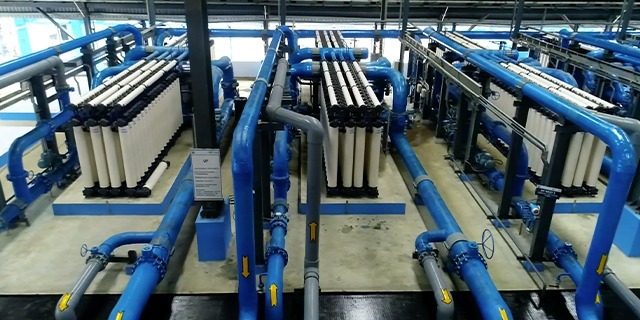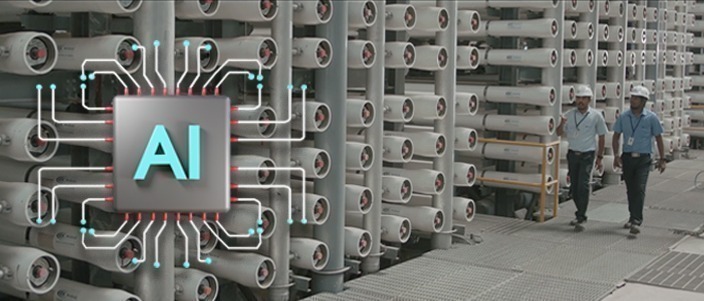Innovative and Developmental Technologies for Desalination – Forward Osmosis
01 January 2021 Submitted by Amir Basha K. Syed (Chief Technology Officer - Desalination)

Forward Osmosis
This is an osmotic process that uses a semi-permeable membrane to separate salts from water. FO uses an osmotic pressure gradient (∆п) instead of hydraulic pressure (∆P), which is used in RO, to create the driving force for water transport through the membrane. No energy is needed to drive the water flux of an FO process, as the water flux is the natural tendency of the system. FO is an innovative membrane-based technology that has the potential to reduce the costs and environmental impacts of desalination.

The concentrated solution, or draw solution, is the source of the driving force in the FO process. A selectively permeable membrane allows passage of water, but rejects solute molecules and ions. Osmotic driving forces in FO can be significantly greater than hydraulic driving forces in RO. This results in the potential for higher water flux rates and recoveries. The selection of an appropriate draw solution is the key to FO performance.
The draw solution should have a high osmotic efficiency (that is, have a high solubility in water and a low molecular weight), be non-toxic; trace amounts of chemicals in product water might be acceptable, be chemically compatible with the membranes.
Draw solutions include magnesium chloride, calcium chloride, sodium chloride, potassium chloride, ammonium carbonate and sucrose

A simplified process schematic of an FO process using ammonium carbonate as a draw solution
Potential Advantages over Established Technologies
• FO Operates around 1 atmosphere (atm), which results in much lower energy consumption compared to conventional membrane and mechanical/thermal evaporative desalination technologies
• FO Membrane compaction is not typically an issue
• Has less fouling propensity compared to RO
Potential Disadvantages Compared to Established Technologies
• FO is still under development. Knowledge about the following has not been established fully: treatment efficiencies of larger-scale installations, economics, and short- and long-term performance and fouling/scaling
• Requires special membranes. Existing commercially available RO membranes are not suitable for FO because such membranes have a relatively low product water flux, which can be attributed to severe internal concentration polarization in the porous support and fabric layers of RO membranes
• Use of ammonium carbonate as draw solution may provide desired osmotic pressure. However, diffused ammonia to the permeate stream should be removed using a low cost technology (such as waste heat to strip ammonia)
Advancements needed for consideration of this technology in full-scale applications
• Identifying effective and economical draw solutions and technologies/approaches that remove draw solutions economically (such as using waste/low-grade heat).
• Developing new and additional membrane sources. Currently, a limited number of commercially available membranes are on the market using cellulose triacetate.
• Addressing mass transfer limitations resulting from concentration polarization within the membrane support layer.
• Developing new modules suitable for full-scale implementation. To date, most applications have used flat-sheet, plate and frame elements.







